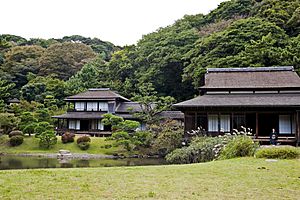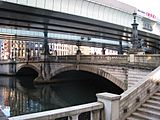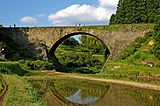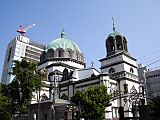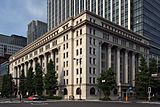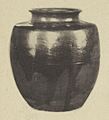Important Cultural Property (Japan) facts for kids
An Important Cultural Property (called jūyō bunkazai in Japanese) is a special item. The Japanese government officially recognizes these items. They are considered very important for Japan's history, art, and culture. The Agency for Cultural Affairs, part of the Ministry of Education, Culture, Sports, Science and Technology, decides which items get this special title.
Contents
Protecting Japan's Cultural Treasures
To keep Japan's amazing cultural heritage safe, a law was created. It's called the Law for the Protection of Cultural Properties. This law helps protect important items.
How Things Are Protected
There are two main ways to protect cultural items:
- Designation System: This system gives strong protection to very important items. Once an item is "designated," it means it's officially recognized as a Cultural Property. This makes it harder to change, fix, or send these items out of Japan.
- Registration System: This system offers a bit less protection. It helps support and care for items that are also important but might not need the highest level of protection.
Types of Cultural Properties
Cultural items are grouped by what they are. Tangible Cultural Properties are things you can touch. These include:
- Buildings and structures
- Paintings and sculptures
- Handicrafts and calligraphy
- Old books and historical documents
- Items found by archaeologists
If these tangible items are very valuable for history or art, they can become an Important Cultural Property. Some items are even more special. They can be named a National Treasure.
Who Decides?
Important Cultural Properties can be chosen at different levels:
- City level: A city can name an item as an Important Cultural Property.
- Prefectural level: A prefecture (like a state) can also give this title.
- National level: The national government gives the highest level of designation.
Sometimes, an item can have more than one designation. For example, Sankei-en is a beautiful traditional Japanese garden in Yokohama. It is an Important Cultural Property at both the city and national levels.
Examples of Important Cultural Properties
-
Seiganto-ji, a temple in Wakayama Prefecture
-
Kōchi Castle in Kōchi Prefecture
-
Nihon Bridge in Nihonbashi, Tokyo
-
Tsūjun Bridge in Kumamoto Prefecture
-
Tsurugaoka Hachimangū shrine in Kamakura, Kanagawa prefecture
See also
 In Spanish: Bien Cultural Importante de Japón para niños
In Spanish: Bien Cultural Importante de Japón para niños
- Cultural Properties of Japan


